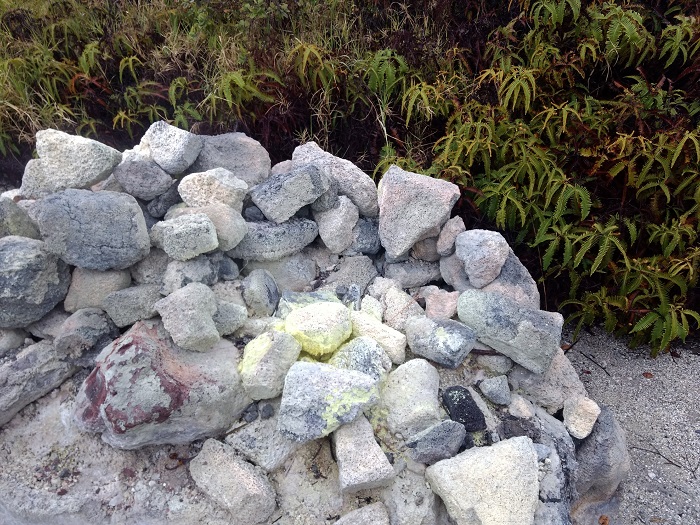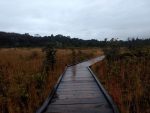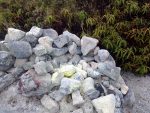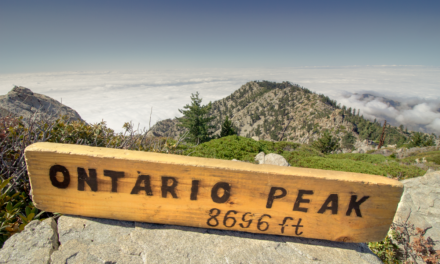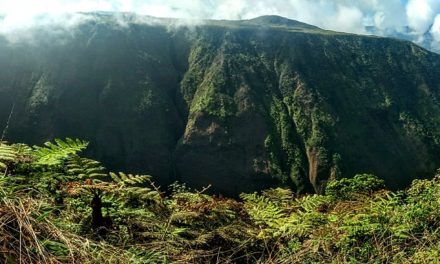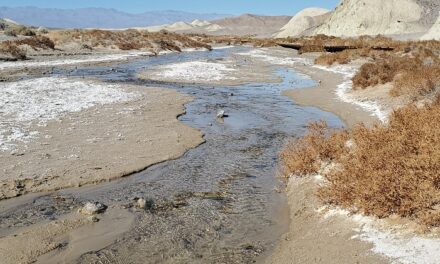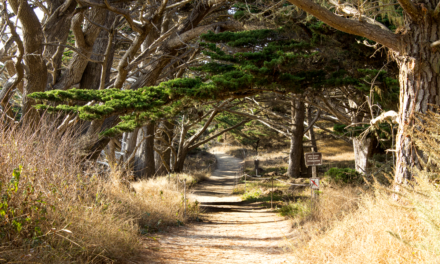Sulphur Banks Trail Hiking Guide – Hawai’i Volcanoes National Park
No trip to the Big Island is complete without experiencing the beauty of Hawai’i Volcanoes National Park. This unique national park is one of a select few in the United States that features an active volcano. In recent years this volcano has added a significant amount of new land to the Big Island of Hawai’i. Since the 1960’s this national park has been erupting on an almost continuous basis. Those who have been fortunate enough to catch this place during an active eruption know just how memorizing this place can be.
The Sulphur Banks trail is a short out and back trail on the edge of the Kilauea caldera, one of the two volcanoes that make up this national park. The caldera is the is a large volcanic crater formed by the collapse of the mouth of the volcano. Kilauea is the largest crater in this national park. This hike features a thermal landscape with multiple steam vents throughout the trail. The gases emitted through these steam vents resemble the familiar odor of rotten eggs.
This portion of the island receives a large amount of rain. The rain trickles far below the ground through the porous lava rock. Eventually its superheated by a large pool of magma underneath the surface. The water rises back to the surface in the form of steam. Coming up along with the water are minerals and gases such as sulphur that color the surrounding rocks hues of yellow and white. Carbon dioxide and hydrogen sulfide are some of the other gases that are mixed in with the steam. The sulphur will be easily identified by its rotten egg smell. Some of the gases form sulfuric acid which breaks down hardened lava into clay. The clay can be stained red and brown from iron in the soil being oxidized into rust.
Caution: Those with respiratory problems, pregnant women, or small children should not do this trail. Those with known sulphur allergies should also avoid this trail. Please also stay on the trail. Not only does this damage native plant live but you put yourself at risk. The area is filled with cavernous that are quite deep. People have also been known to fall into the steam vents and suffer third degree burns and lung injuries. There have even been documented deaths from people not following posted warnings and falling into the vents.
Hawai’i Volcanoes National Park History
This national park offers a historical perspective of the forces that shaped the entire Hawaiian archipelago. Even more important is the amount of cultural history that this park has to offer. This national park is incredibly large with many remote areas. The park features two active volcanoes: Kilauea and Mauna Loa. Mauna Loa is the largest mountain on earth by landmass and Kilauea is one of the most active volcanoes in the world. Many points of interest are easily accessible within the park. For the experienced and those with time, check out some of the more remote areas of the park including the 13,000+ hike to the top of Mauna Loa. While vising the park, be sure to take time to learn about the cultural and spiritual importance that these volcanoes have to the Native Hawaiians and locals.
Having spent nearly twenty years growing up on the Big Island and visiting this national park more times than I can count, I highly recommend this place for anybody visiting the island. The landscape here is one of the most unique places to be experience. In one instant you can be standing in a dense tropical rainforest then step out to a viewpoint and be greeted with a sight that resembles the landscape of the moon. Consider yourself even luckier to catch this place during an active eruption and can do a lava hike.
On A Personal Note:
It’s not too often that you can take a hike through steaming vents that smell like rotten eggs all because of an active volcano. This hike is a very interesting short trail and well worth the time for anyone visiting Hawai’i Volcanoes National Park.
The Sulphur Banks trail can be hiked in two different ways. One way is to hike this trail one way. The starting point will be at either end near the stem vents or near the visitor center. This is a great option if you have an arranged ride. Another way is to do this hike as an out and back. My wife and I completed this hike by only hiking half of it and then hiking back to where we started.
Looking for something else to do nearby? If you have more time, check out the steam vents that sit along the edge of the caldera overlooking Halema’uma’u crater. These vents sit at the beginning the trail entrance furthest away from the visitor center. Although they are near the beginning of the sulphur trails, they are not part of the hike. The steam vents will be easily marked by signs and also are marked on the main park map. If you’re looking for another short hike nearby, be sure to check out Thurstons Lava Tube.
Sources:
1. N.a. “Steam Vents and Sulphur Banks.” National Park Service. U.S. Department of the Interior. https://www.nps.gov/havo/learn/nature/steam-vents.htm. 18 May 2021. Accessed 15 June 2021.
- Overall Difficulty 30%
- Overall Views 100%
Sulphur Banks Trail Quick Facts:
- Max elevation: 4,005 feet.
- Elevation Gain: 32 feet.
- Estimated Distance: 0.7 miles (one way).
- My Actual Distance: 1 mile.
- Estimated Time: 60-90 minutes.
Sulphur Banks Trail Directions:
There are two places to park for this trail. One option is to park near the steam vents (open in maps). From there there will be a trail for the Sulphur Banks that crosses the highway. It’s also marked along the highway and the park map. The other area to park is at the visitor center (open in maps). The Sulphur Banks trailhead is near the south end of the parking lot towards the Volcano Art Center Gallery. Price to enter is the cost of admission to the national park. An America The Beautiful Pass will also work.
Sulphur Banks Trail Pictures:
- The boardwalk that lines some of this trail.
- One of the many sulphur vents along the trail.
- A wider angle of some of the iron oxide soil and yellow and white hues.
- A large steaming sulphur vent.
Who The Sulphur Banks Trail Hike Is For:
Novice Hikers: This is a great trail for new hikers or those looking for a short hike to add to their park itinerary. This is a simple trail with a unique experience, a very defined trail, and little elevation gain.
Advanced Hikers: Don’t expect any difficulty here. What is nice about this hike is that it is unique and can be paired with some longer trails in the park like the Kilauea Iki Trail.
Expert Hikers: Same as for advanced hikers.
It’s always a good idea to be aware of what type of hiking level you’re at.
Best Time Of Year To Hike The Sulphur Banks Trail:
Generally speaking there are narrow temperature variances throughout the year. Winter can be cooler than the summer by about ten to fifteen degrees. What’s important to know is that the weather varies quite a bit from the summit where this hike is located compared to the coastal basin of the park. At the summit highs in the mid-70’s to 80’s are common with some of the low temperatures getting into the 50’s and even pushing 40 degrees at times. The summit area is far rainier than the coastal basin. Expect unpredictable weather here. It can be sunny with blue skies at one minute and dark and rainy thirty minutes later. My motto is for visiting this park: expect both rain and sun.
It’s always a great idea to check the weather before a hike.
Sulphur Banks Trail Conditions:
Generally speaking the Sulphur Banks trail is in great condition. After a significant amount of rain the trail can be muddy. The trail is mostly dirt and winds through a variety of different steam vents along the ridge of the caldera. There is one portion of the trail near the steam vents that is made out of elevated wood. This is because there is little vegetation here and it often gets muddy during rain. As a reminder, those with respiratory issues, pregnant women, small children and infants, and those with a known sulphur allergy should avoid hiking this trail due to the toxic gases.

